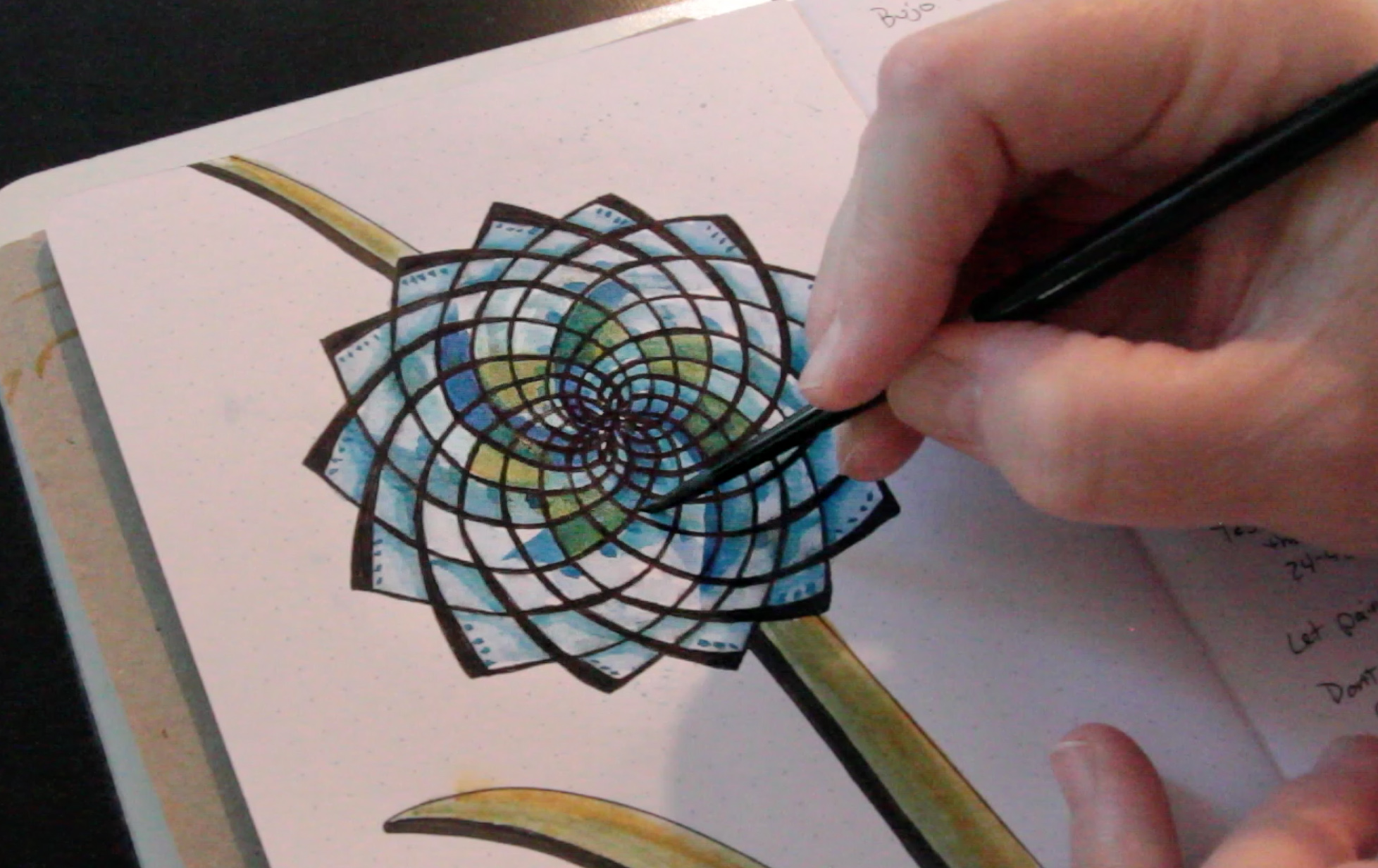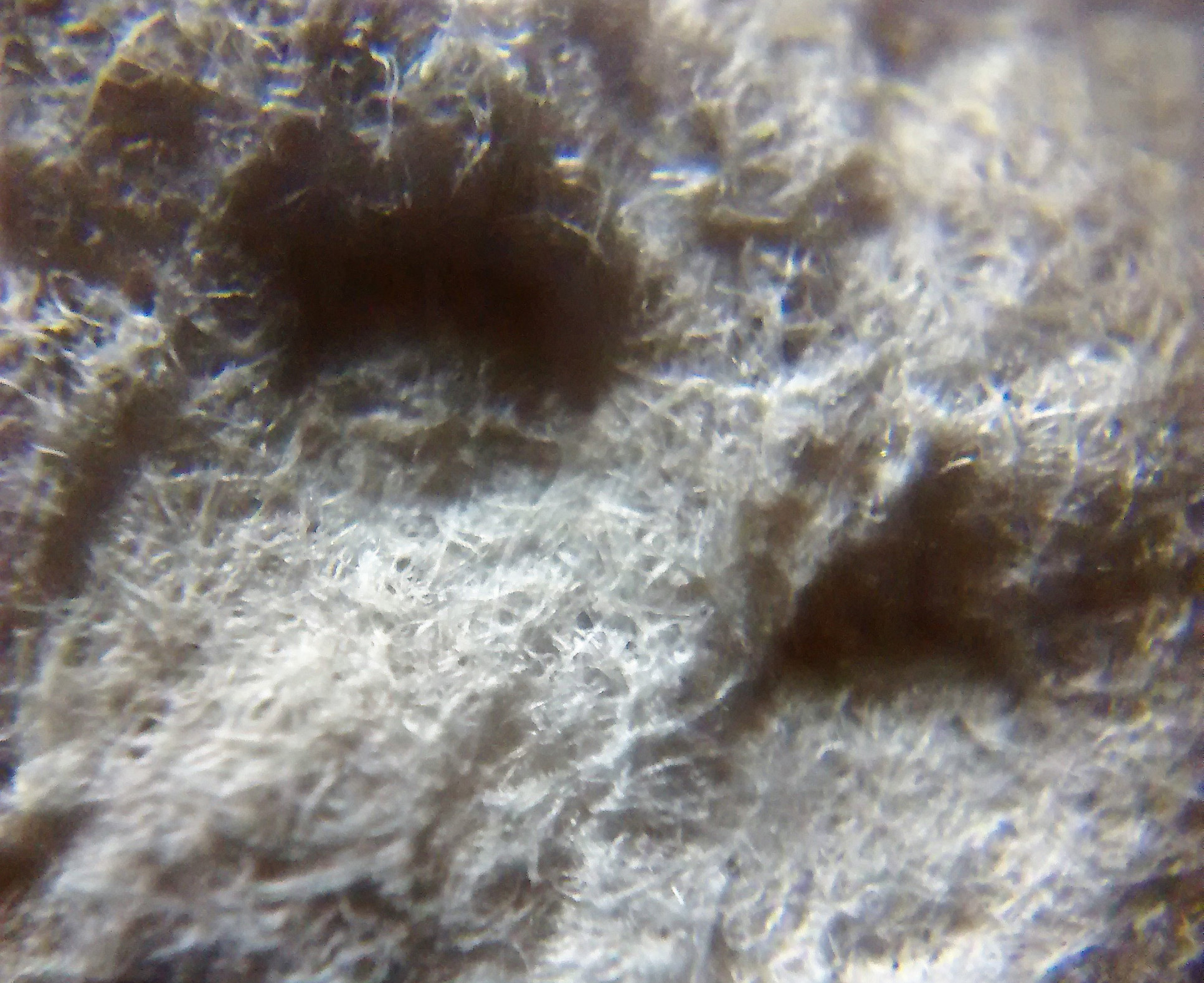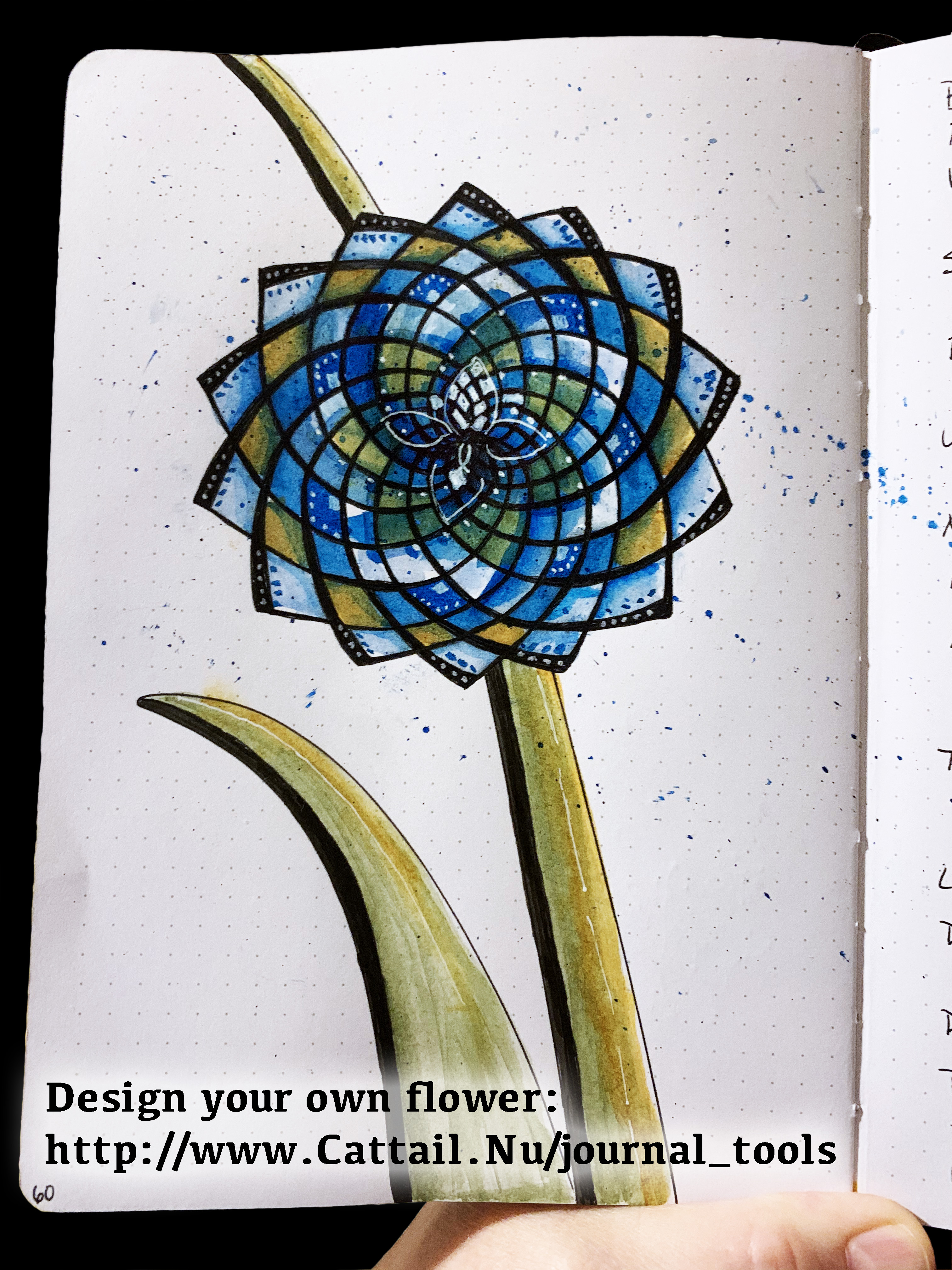
This guide goes through how pigments (both paint and ink interact with paper) so you can understand how to apply this to using watercolors (and other mediums) in your "normal paper" journals.
This is what a paper towel looks like under a microscope (source: commons.wikimedia.org). Paper is tiny fibers that are mushed together with varying shred-fineness, density, and thickness.

Arches 140lb cold press paper. Water. Schmincke Horadam Aquarell Artist Watercolor, May Green. Silver Black Velvet watercolor brush, 3000S, Size 4.
The paper fibers are fairly far apart with peaks and valleys for the water to flow into. The fibers expand upward and outward as they absorb water, but there is room for the fibers to grow in size.
Arches 140lb cold press paper. Copic Sketch, G14, Apple Green, brush tip.
Alcohol based inks, like Copic ink, immediately wick into paper fibers and flow around/along them. Alcohol ink continues to move once the pen tip is past. This is why there is immediate bleed-through (visible on back side of the paper), even on marker paper.
Arches 140lb cold press paper. Zebra Mildliner, Green, brush tip (of double-ended).
This water-based ink doesn't really flow because it's slightly gooey-er and clings to the top and sides of the fibers rather than absorbing.
If you take your Mildliner, draw a few layers on your thumb and immediately use your fore-finger to rub it around, you can feel the thickness of the ink. Do the same experiment on a clean thumb with a Copic marker and you'll find that it feels mildly wet and is immediately gone. This suggests that the particles of the alcohol ink are much finer (tinier) than the water-based ink and suggests how much it will absorb into the fibers instead of sitting on the surface of the fibers.
Archer & Olive A5 Zodiac - Scorpio Dot Grid Notebook, .5 cm dot grid, 160gsm "normal" paper. Zebra Mildliner, Green, brush tip (of double-ended).
The paper fibers are closely packed with little texture for a smooth surface. The Mildliner ink clings to the top of the paper and doesn't flow very far.
Going over the same area in a circle will add more ink which will start to absorb, but the surface of the paper starts to fall apart with the scrubbing motion.
Archer & Olive A5 Zodiac - Scorpio Dot Grid Notebook, .5 cm dot grid, 160gsm "normal" paper. Copic Sketch, G14, Apple Green, brush tip.
The ink immediately absorbs into the paper and spreads, causing bleed-through. The alcohol evaporates off so the fibers don't really expand very much.
This brings us to watercolor in a standard journal.
Watercolor will react somewhere between a Mildliner and a Copic with spreading pigment. The paper fibers are going to absorb the water and expand, pushing against the drier paper. With nowhere to go, the expanding fibers cause annoying bubbles and ripples. The larger watercolor particles are going to sit mostly on the surface of the paper. You'll be able to feel the paint on the surface of the paper when it dries.
To avoid paper bubbles and ripples, you need to make the watercolor interact with the paper more like the Mildliner than the Copic. This means you want to prevent too much water from absorbing into the fibers.
Archer & Olive A5 Zodiac - Scorpio Dot Grid Notebook, .5 cm dot grid, 160gsm "normal" paper. Schmincke Horadam Aquarell Artist Watercolor, May Green. Silver Black Velvet watercolor brush, 3000S, Size 4.
If you leave too much liquid on the surface of the paper, it will absorb, expanding the paper fibers. Here the brush is too wet and too much liquid sits on the paper.
Water brushes, filled with water, are too wet. The nylon bristles are stiff and can easily tear the surface of the paper with even light-scrubbing.

Archer & Olive A5 Zodiac - Scorpio Dot Grid Notebook, .5 cm dot grid, 160gsm "normal" paper. Schmincke Horadam Aquarell Artist Watercolor, May Green. Silver Black Velvet watercolor brush, 3000S, Size 4.
The key is to avoid letting too much water absorb into the paper fibers while letting the pigment stain and dry on the paper surface.
If you found this helpful, consider sharing it and taking a look at my books.
Scroll down to see this watercolor technique being used.
Archer & Olive A5 Zodiac - Scorpio Dot Grid Notebook, .5 cm dot grid, 160gsm "normal" paper. Schmincke Horadam Aquarell Artist Watercolor. Daniel Smith Watercolor. Winsor & Newton Watercolor. Silver Black Velvet watercolor brush, 3000S, Size 4.
I let the stem sit "wet" a little too long which caused some mild paper-bending. I also failed to let it dry between layers. I did better on the petals.

More Journal Tools.